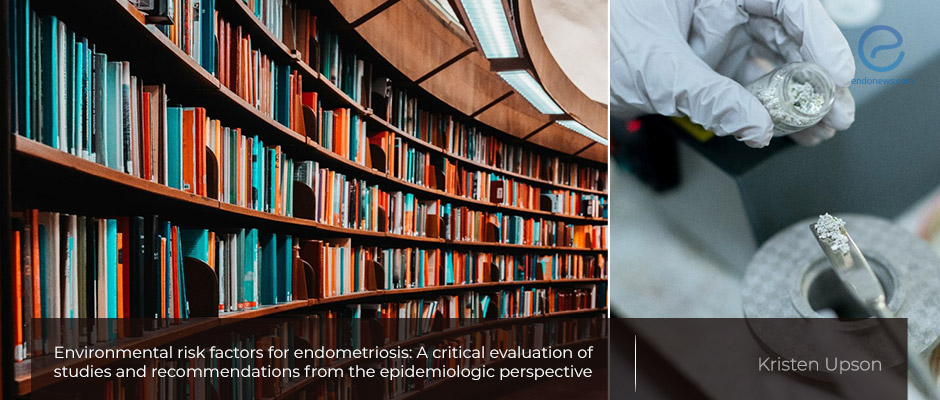How to unveil the discrepancy regarding the effect of chemicals on the etiology of endometriosis
Nov 23, 2020
An epidemiologist's critical perspective on published research regarding chemicals related to endometriosis
Key Points
Importance
- The etiology of endometriosis remains unresolved despite intensive research, several theories have been hypothesized for pathogenesis.
- However, it is well accepted that endometriosis has a multifactorial basis with suspected environmental factors also operating.
- Endocrine-disrupting chemicals i.e., “exogenous chemicals, interfering with any aspect of hormone action” are suspected in relation to endometriosis risk.
Highlights:
- Environmental chemicals investigated in relation to endometriosis has expanded tremendously, now including perfluoroalkyl substances, air pollution, and benzophenone-type UV filters.
- The current problem in research regarding this kind of risk analysis is mainly control selection.
- Besides, analyses addressing issues related to studying environmental chemicals varies so that the outcome of some investigations may result in biased estimates of risks.
What's done here:
- This review article has evaluated published researches of chemicals effective in the etiology of endometriosis from the epidemiologic perspective identifying aspects of study design and analyses that may contribute to discrepant results across the studies.
Key results:
- Among the twenty-nine studies reviewed, 12 studies used new approaches to population-based sampling, all the others were conducted primarily among patients having pelvic operations. This situation may yield unrepresentative control groups in regard to exposure experience of the underlying study base ending in biased estimates. Most studies used specimens collected near diagnosis and varied in analytic approaches to minimize bias.
- There were few studies investigating ovarian, deep-infiltrating, and peritoneal endometriosis groups separately.
- In searching for environmental origins of endometriosis the segregation of individual endometriosis phenotypes is an important factor in reaching scientifically valuable extrapolations.
Lay Summary
Kristen Upson from Michigan State University published a review article evaluating research papers on environmental factors effective in endometriosis from an epidemiological perspective in "Current Epidemiology Reports".
Endometriosis is a multifactorial disease with anatomical, hormonal, immunological, estrogenic, genetic, epigenetic, and environmental factors operating. Exogenous chemicals, interfering with any aspect of the hormonal milieu (endocrine-disrupting chemicals) are suspected in yielding a risk in endometriosis. The list of environmental chemicals suspected having a role in endometriosis expanded tremendously and includes perfluoroalkyl substances, air pollution, and benzophenone-type UV filters.
However, there are major problems in research regarding this kind of risk analysis that is centered on mainly the selection of controls. In addition, analyses with issues related to studying environmental chemicals vary, so that the outcome of some investigations may result in biased estimates of risks.
This review article has evaluated twenty-nine published research of chemicals in regard to endometriosis from the epidemiologic perspective identifying aspects of study design and analyses that may contribute to the discrepancy in results across studies. Except for twelve studies using new approaches to population-based sampling, all the others were conducted primarily among patients having pelvic surgeries. This may result in unrepresentative control groups in regard to exposure experience of the underlying study base yielding biased estimates. Most studies use specimens collected near diagnosis and varies in analytical methods. Another important issue is that few studies separated different types of endometriosis. In order to reach a conclusive analysis of environmental factors operating on different endometriosis phenotypes should be segregated to reach scientific extrapolations.
It is also important to use a uniform classification when dividing the heterogeneous endometriosis disease entity into groups, specifically the one which is is recognized and recommended by the 2014 World Endometriosis Research Foundation Endometriosis Phenome and Biobanking Harmonisation Project, that was established to promote a standardized collection of phenotype data, including the lesion location, color, and depth while dealing with endometriosis research.
In conclusion, to tackle the incontinent results when examining the effect of environmental chemicals on endometriosis risk, overlooked aspects of study design and analysis should be considered and recommendations provided should be carefully appraised to move the field of environmental origins of endometriosis research forward.
Research Source: https://pubmed.ncbi.nlm.nih.gov/33042729/
Endometriosis environment pollutants endocrine-disrupting chemicals bias controls

